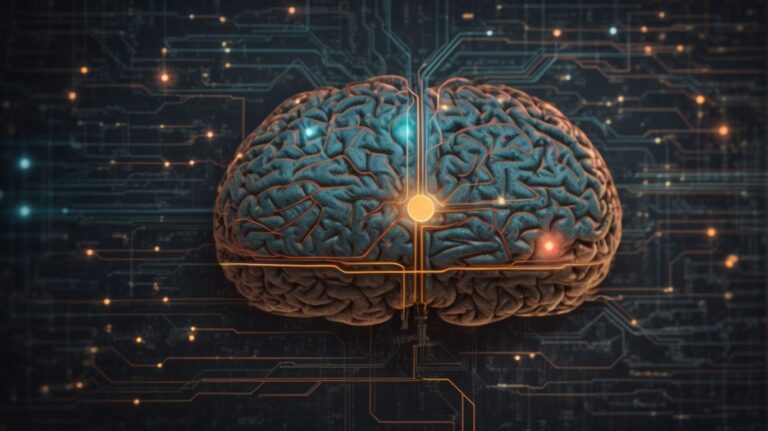Have you ever woken up from a dream feeling puzzled or intrigued by its meaning? Dreams have fascinated people for centuries, prompting questions about their purpose and significance.
In this article, we will explore the different types of dreams, the theories behind why we dream, and how dreams can impact our mental health. We will also delve into common dream symbols and offer tips on how to analyze your own dreams. Join us as we uncover the mysterious world of dreams and their potential insights from a psychological perspective.
2.
3.
Contents
- 1 What Are Dreams?
- 2 Why Do We Dream?
- 3 How Do Dreams Affect Our Mental Health?
- 4 What Are Common Dream Symbols And Their Meanings?
- 5 How To Analyze Your Dreams?
- 6 What Are The Limitations Of Dream Analysis?
- 7 Frequently Asked Questions
- 7.1 What is the purpose of analyzing dreams with insights from psychology?
- 7.2 How does psychology play a role in dream analysis?
- 7.3 Can analyzing dreams provide insight into our daily lives?
- 7.4 What is the most common psychological approach to analyzing dreams?
- 7.5 Is it necessary to seek professional help for dream analysis?
- 7.6 Can dream analysis help with personal growth and self-discovery?
What Are Dreams?
Dreams are a fascinating aspect of human experience that have intrigued scholars and psychologists throughout history, with prominent figures like Freud and Jung looking into their meaning and significance.
The ancient Egyptians believed that dreams were messages from the divine, and dream interpretation was seen as a way to communicate with the gods. Sigmund Freud, the father of psychoanalysis, proposed that dreams are a window into our unconscious desires and fears, shaping our thoughts and behaviors.
- Carl Jung, a renowned Swiss psychiatrist, expanded on Freud’s ideas by introducing the concept of the collective unconscious.
- He suggested that dreams could reveal archetypes and symbols that are shared across cultures.
Exploring these varied perspectives on dreams allows us to comprehend the complexity of the human mind and the depths of our subconscious.
What Are The Different Types Of Dreams?
Exploring the diverse landscape of dreams reveals various types that encompass common themes such as nightmares, emotional processing, and memory consolidation, shedding light on the rich tapestry of dream imagery and experiences.
Dreams are often categorized into different types based on their content and impact on individuals. Common dreams are those that many people experience, such as flying, falling, or being chased, reflecting universal human emotions and fears.
On the other hand, nightmares are intense and distressing dreams that can evoke fear, anxiety, or sadness, often disrupting sleep and causing emotional distress. These dreams may stem from unresolved issues, trauma, or stress in one’s waking life, serving as a window into the subconscious mind.
Why Do We Dream?
The phenomenon of dreaming serves multiple purposes, including facilitating memory consolidation and aiding in emotional processing, reflecting the intricate workings of the mind during sleep cycles.
During the dreaming phase, the brain exhibits unique patterns of activity that differ from the waking state. One of the key aspects of dreaming is its role in memory consolidation, where the brain processes and stores information acquired during wakefulness. Memory consolidation is vital for encoding memories from short-term to long-term storage, a process that contributes to learning and cognition.
Dreams play a crucial role in emotional regulation and processing. By replaying and interpreting emotional experiences during sleep, individuals can better understand and cope with their feelings. This emotional processing function of dreaming aids in stress reduction and psychological well-being.
What Are The Theories Behind Dreaming?
Dreaming has sparked various theories over time, with influential figures like Freud, Jung, Hall, and Domhoff contributing their perspectives on the complexities of dream interpretation and symbolism.
Freud, the pioneer of psychoanalysis, viewed dreams as a gateway to the unconscious mind, where repressed desires and emotions manifest symbolically.
Jung, on the other hand, emphasized archetypes and collective unconscious in dream analysis, suggesting a deeper universal meaning beyond personal experiences.
Hall focused on the cognitive approach, interpreting dreams as reflections of waking life experiences and emotions.
Domhoff’s neurocognitive theory delves into how dreams are shaped by neurological processes and daily life events, challenging traditional psychoanalytic interpretations.
These diverse frameworks offer a rich tapestry of insights into the enigmatic realm of dreams.
How Do Dreams Affect Our Mental Health?
Dreams play a significant role in mental health by offering insights into our subconscious thoughts, emotions, and stress levels, providing a window into the psyche’s inner workings.
When we dream, our minds are not constrained by the logic and structures of waking life, allowing us to explore deeper aspects of our psyche. Dreams serve as a natural outlet for processing complex emotions and experiences, helping us navigate challenging situations. Through dream analysis, individuals can uncover hidden fears, desires, and unresolved issues that may be impacting their mental well-being. By decoding the symbolism and themes present in dreams, individuals can gain valuable self-awareness and cultivate healthier coping mechanisms.
Can Dreams Be Used In Therapy?
Dreams hold therapeutic potential as valuable tools for psychotherapists to uncover deep-seated issues, explore subconscious patterns, and facilitate healing through dream analysis and interpretation.
Psychotherapists play a crucial role in helping withdividuals in understanding the symbolic language of their dreams and connecting them to their emotional experiences. By looking into dream imagery, therapists can gain insights into clients’ fears, desires, unresolved conflicts, and aspirations, offering a deeper understanding of their inner world. This process aids in promoting self-awareness, fostering personal growth, and addressing psychological challenges effectively. Dream analysis enables the integration of unconscious material into conscious awareness, leading to profound transformations and emotional healing within the therapeutic setting.
What Are Common Dream Symbols And Their Meanings?
Common dream symbols offer a glimpse into our subconscious minds, with interpretations varying widely based on individual experiences and emotions, making them intriguing elements of dream analysis.
One of the most common dream symbols is falling, which often represents feelings of insecurity or lack of control in one’s life. Conversely, flying in a dream can symbolize a sense of freedom or a desire to escape from constraints. Encountering water in dreams may signify emotions and the flow of life. Animals appearing in dreams can have various meanings, such as a reflection of one’s instincts or untapped potential. Understanding these symbolic representations can provide insight into one’s inner thoughts and feelings.
Falling
The dream symbol of falling often reflects feelings of insecurity, loss of control, or transitions in one’s life, highlighting the psychological depth and symbolic meanings associated with this common dream experience.
When one dreams of falling, it can signify a lack of stability or fear of change in their waking life. Psychologically, this dream may stem from unresolved anxieties or uncertainties that the individual is grappling with. The act of falling in dreams is not only a physical experience but also carries emotional connotations related to vulnerability and unpredictability. It can serve as a subconscious reflection of the dreamer’s current state of mind and their subconscious perception of the world around them.
Flying
Flying dreams symbolize freedom, enablement, and transcendence, offering a sense of liberation and exploration within the dream landscape, reflecting the subconscious desires and aspirations of the dreamer.
When one experiences the sensation of flying in a dream, it often represents a yearning for freedom from constraints and limitations in one’s waking life. This powerful symbol can indicate a desire to break free from societal norms, personal restrictions, or even self-imposed boundaries. The act of flying in dreams can also signify a deep-seated ambition to soar to new heights and achieve goals that may seem out of reach in reality.
Flying dreams can be interpreted as a sign of personal growth and self-discovery. They suggest an inner journey towards self-realization and transformation. As the dreamer navigates the skies effortlessly, it mirrors their inner strength, courage, and willingness to explore the unknown. This symbolic flight signifies the dreamer’s readiness to embrace challenges, embrace change, and expand their horizons.
Being Chased
Dreams of being chased often represent feelings of anxiety, avoidance, or unresolved conflicts, symbolizing the need to confront fears, address challenges, and seek resolution in waking life.
When experiencing the sensation of being pursued in a dream, it can mirror underlying stress or pressure that one might be internalizing. The act of fleeing from an unknown pursuer could suggest avoidance of a certain aspect of life or a conflict that needs acknowledgment. This recurring theme may point towards a deep-seated fear or an issue that has been suppressed but is now demanding attention. It signifies the urgency to delve into the root cause of such apprehensions and tackle them head-on to promote personal growth and emotional well-being.
Teeth Falling Out
Dreams of teeth falling out often signify concerns about appearance, communication, or personal power, reflecting issues of self-image, expression, and confidence in the dreamer’s waking life.
When one experiences the unsettling dream of teeth falling out, it can hint at underlying feelings of vulnerability or insecurity. This common dream theme can represent a fear of losing control or the inability to convey thoughts effectively. Teeth are not just tools for chewing food; they often symbolize strength and vitality. In dream analysis, the act of teeth falling out can highlight moments of transition or transformation, urging the dreamer to explore areas of their life where they may feel exposed or uncertain.
How To Analyze Your Dreams?
Analyzing your dreams involves maintaining a dream journal, identifying recurring symbols, and exploring personal associations and emotions to unlock the hidden meanings and insights embedded in your dream experiences.
Keeping a detailed dream journal is the cornerstone of successful dream analysis. By recording your dreams immediately upon waking, you capture the raw emotions and vivid imagery that may fade quickly from memory. Reviewing these entries regularly can reveal patterns, triggers, and connections that offer valuable clues about your subconscious mind.
Pay attention to recurring symbols in your dreams, such as animals, objects, or places, as they often carry significant meanings unique to your psyche.
Keep A Dream Journal
Keeping a dream journal is a fundamental practice for capturing dream imagery, emotions, and details, fostering self-awareness, enhancing dream recall, and potentially inducing lucid dreaming experiences.
One of the key benefits of maintaining a dream journal is that it significantly improves your ability to recall dreams. When you consistently write down your dreams, you train your mind to remember them more clearly. This, in turn, can lead to a better understanding of your subconscious thoughts and emotions.
A dream journal serves as a tool for self-reflection. By jotting down your dreams and revisiting them later, you can gain valuable insights into your innermost desires, fears, and aspirations. This process can help you identify patterns, recurring themes, and unresolved issues in your waking life.
Keeping a dream journal can be a stepping stone to achieving lucid dreaming. When you document your dreams regularly, you become more attuned to the subtle cues and inconsistencies that signal you are dreaming. This heightened awareness can pave the way for lucid dreaming, where you are consciously aware that you are in a dream state, allowing you to control and manipulate your dream experiences.
Pay Attention To Emotions And Symbols
Interpreting dreams involves paying close attention to emotional cues, symbolic representations, and subconscious messages embedded within the dream content, unraveling the layers of meaning and personal significance.
Emotions play a pivotal role in dream interpretation, acting as a gateway to understanding our deepest desires, fears, and unresolved issues. Symbolism in dreams serves as a language of the mind, offering rich insights into our psyche and behavioral patterns. By deciphering these symbols and acknowledging the emotions they evoke, individuals can gain valuable insights into their psychological state and inner conflicts.
Exploring the emotional context of dreams can aid in self-reflection and personal growth, facilitating a deeper connection with one’s inner self and fostering self-awareness. By looking into the intricate web of symbols and emotions in dreams, individuals can uncover hidden truths, confront unresolved emotions, and embark on a journey of self-discovery.
Consider Your Personal Associations
Analyzing dreams involves reflecting on personal associations, memories, and experiences that may influence dream content, providing valuable insights into one’s psyche, relationships, and inner conflicts.
When looking into dream analysis, one must consider how significant past interactions and unresolved emotions manifest in the dream realm. Dreams often act as a canvas, where the subconscious projects images that are imbued with symbols and meanings rooted deep within one’s conscious and unconscious mind.
Exploring dreams in this manner can unveil hidden truths, fears, desires, and aspirations that might be obscured in waking life. By scrutinizing the intricate threads connecting our daily lives to our dreamscapes, we unravel a tapestry of connections that reveal profound insights into our psychological makeup.
What Are The Limitations Of Dream Analysis?
Despite its utility, dream analysis faces limitations due to its subjective nature, the lack of concrete scientific evidence, and the inherent challenges in interpreting complex dream symbolism and narratives.
Interpreting dreams poses unique challenges due to the inherent subjectivity of the human mind. What may seem significant in a dream to one individual may hold little to no relevance for another. This variability in interpretation makes it challenging to establish consistent and concrete analyses across different individuals. For more insights on analyzing dreams from a psychological perspective, visit Analyzing Dreams: Insights from Psychology.
The absence of empirical evidence to validate dream analysis methods raises questions about its scientific credibility. Without tangible data or replicable experiments to support the interpretations, dream analysis remains largely in the realm of speculation and personal perception.
Subjectivity
Subjectivity poses a significant challenge in dream analysis, as individual perspectives, biases, and experiences influence the interpretation of dream symbols and narratives, making objective analysis a complex endeavor.
When looking into dream interpretation, it’s essential to acknowledge how personal perspectives can color the way we understand our dreams. Every person brings their unique background, emotions, and memories, layering their dreams with individualized symbolism and meaning. These subjective lenses can lead to diverse interpretations of the same dream content, showcasing the intricate interplay between personal biases and the subconscious mind.
Our subconscious often communicates through symbols, metaphors, and scenarios that hold personal significance based on our past experiences and emotional states. This personalized symbology requires a nuanced approach, recognizing that dream analysis is not a one-size-fits-all process. The subjectivity inherent in dream interpretation invites us to explore our inner landscapes with curiosity, empathy, and a keen awareness of our unique perspectives and biases.
Lack Of Scientific Evidence
The field of dream analysis often lacks concrete scientific evidence to support its theories and interpretations, presenting a challenge in validating the empirical basis of dream symbolism and meaning.
While dreams have fascinated humanity for centuries, their enigmatic nature makes them a complex subject for scientific scrutiny. The intangible and subjective nature of dream experiences poses challenges in designing controlled experiments to study them. Researchers often rely on self-reporting and qualitative analysis, which can be subjective and prone to interpretation bias.
Neuroscience has made strides in understanding brain activity during sleep, offering insights into the physiological processes underlying dreaming. Correlating this brain activity with specific dream content remains a formidable task.
Difficulty In Interpretation
The complexity of dream symbolism and narratives often poses a challenge in interpretation, requiring careful analysis, contextual understanding, and psychological insight to unravel the layers of meaning embedded in dream experiences.
One common aspect in understanding dreams is the significance of symbols and how they differ from person to person based on cultural, personal, and even unconscious influences. Symbolism can range from everyday objects to surreal scenarios, each carrying a unique message or emotional underpinning.
The narrative analysis of dreams involves examining the sequence of events, characters, and settings that unfold, akin to dissecting a novel or movie plot. The storyline of a dream may not always be logical, making it crucial to delve beyond the surface story to capture the underlying themes.
Frequently Asked Questions
What is the purpose of analyzing dreams with insights from psychology?
The purpose of analyzing dreams with insights from psychology is to gain a deeper understanding of the messages and symbols in our dreams and how they relate to our subconscious thoughts and emotions.
How does psychology play a role in dream analysis?
Psychology plays a crucial role in dream analysis as it helps us interpret the symbolic meanings behind our dream content. It allows us to uncover any hidden thoughts, emotions, or experiences that may be influencing our dreams.
Can analyzing dreams provide insight into our daily lives?
Absolutely. Dream analysis can reveal underlying fears, desires, and conflicts that may be affecting our waking life. By understanding these connections, we can gain valuable insights into our thoughts and behaviors.
What is the most common psychological approach to analyzing dreams?
The most common psychological approach to analyzing dreams is through the lens of psychoanalysis, which focuses on the unconscious mind and its influence on our thoughts, behaviors, and experiences.
Is it necessary to seek professional help for dream analysis?
While it is not necessary, seeking professional help can provide a deeper and more accurate interpretation of your dreams. A trained therapist can help you explore your dreams in a safe and supportive environment.
Can dream analysis help with personal growth and self-discovery?
Yes, dream analysis can be a powerful tool for personal growth and self-discovery. By understanding our dreams, we can gain insight into our subconscious mind and work towards resolving any underlying issues or conflicts.




